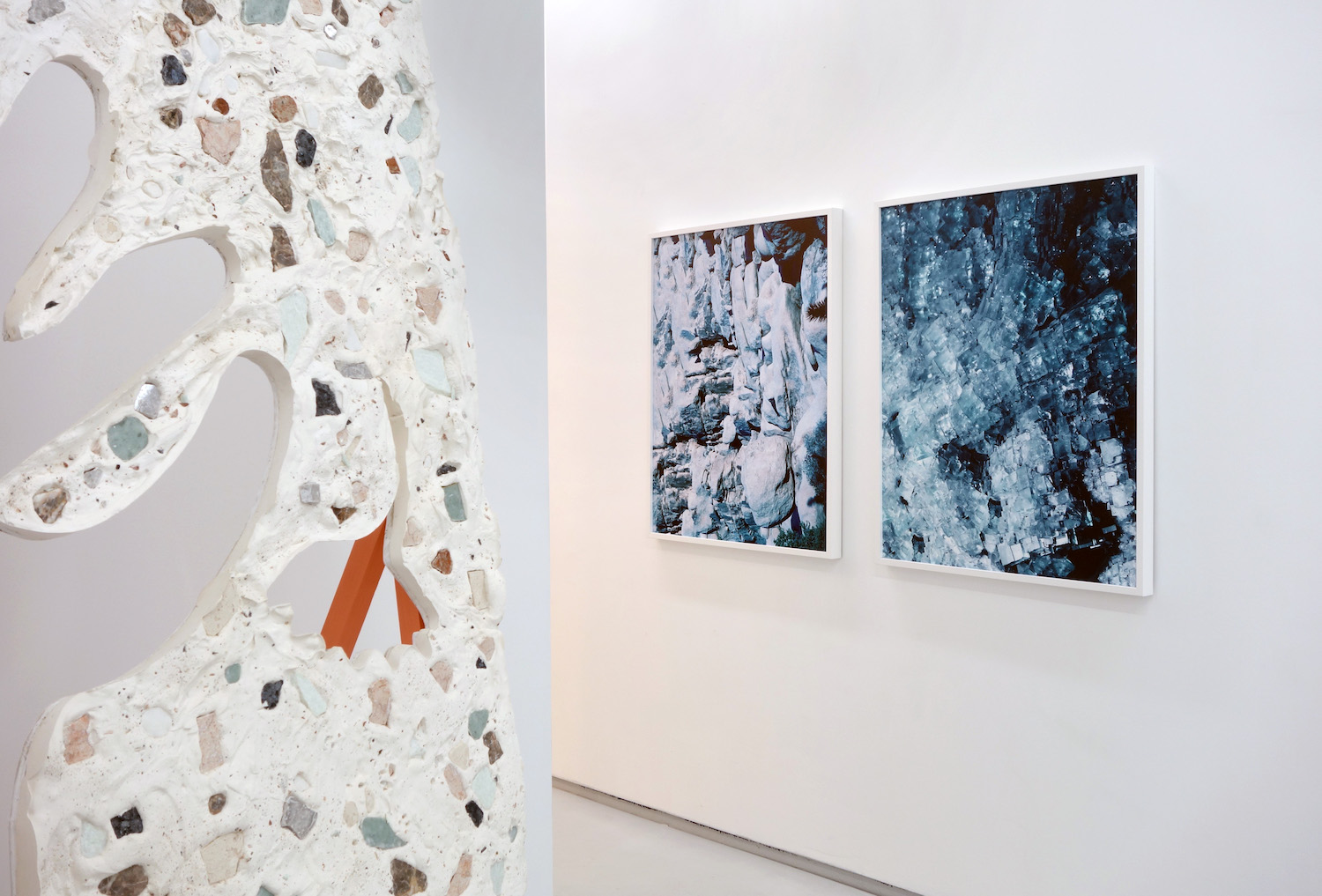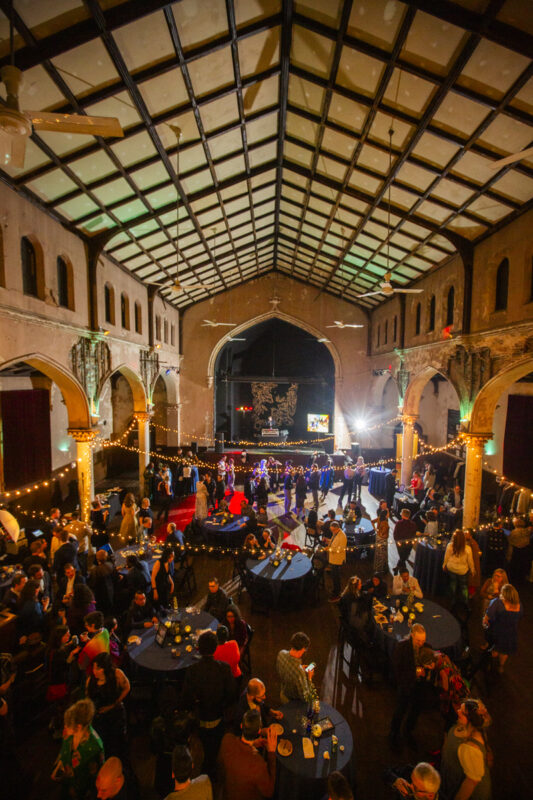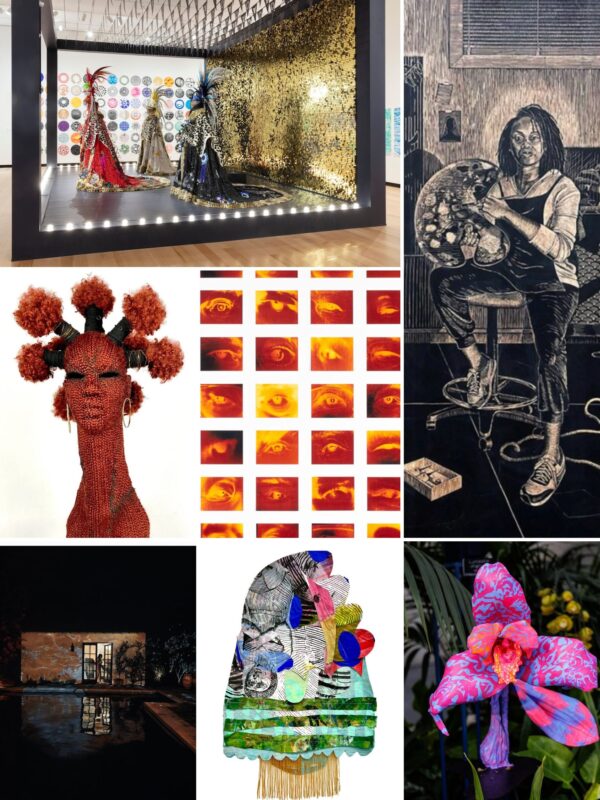And Also Why Zona MACO Desperately Needs a New Location by Michael Anthony Farley
Last week in Mexico City a peculiar thing became evident. Zona MACO—widely regarded as the most important art fair in Latin America—seems to have been near-totally eclipsed by the plethora of satellite events in its orbit. Don’t get me wrong—it’s still the economic engine of the Mexican capital’s art week—but the once-obligatory-seeming fair felt like a low priority on many visitors’ itineraries. In addition to Material Art Fair [see our review here] there are so many pop-ups, private collections, performances, events at museums, open studios, and openings in brick-and-mortar galleries competing for attention spans that one can easily spend a week fully immersed in the art scene without setting foot in Centro Citibanamex.
Anecdotally, plenty of art professionals I know did just that. And really, the choice of venue is to blame. Depending on the time of day, getting to and from the art fair from most parts of the metropolis can mean hours sitting in a cab on a smog-choked freeway. For visitors with just a few days in town, it’s understandable that they’d rather spend that time walking or taking the speedy metro from event-to-event in central colonias. This speaks to the huge proliferation of cultural offerings in Delegación Cuauhtémoc and its immediate surroundings than to a decline in the quality of Zona MACO—indeed, I found this iteration of the fair to be great.
Convincing others to come with me was the challenge.

An art adviser friend from Los Angeles frowned when she realized how much of a time commitment the UBER to and from the fair would be and opted to check out galleries instead. A group of curators from Caracas and Berlin made the same call. Another out-of-town art adviser told me his clients were more interested in studio visits around Centro than a trip to the convention center. I fully understand those decisions—I’ve said before, on any given night in the Mexico City art scene, trying to see it all is a Sisyphean task. If I only had 72 hours in this city, I’d rather spend them gallery hopping on cobblestone streets within walking distance of Material Art Fair, too.
The experience of Centro Citibanamex is basically exactly like an airport, sans any form of reliable public transportation. Sandwiched between a military base and the labyrinthine gated compounds where so much of the Mexican millionaire art-collecting class live, it’s not the best introduction to the city. A friend working for a New York gallery at the fair had never been to Mexico before and was confused as to why I love this city. After days all he had seen were armed guards, barbed-wire fences, and highway on-ramps. He tried to make a supply run to a Home Depot seven minutes away on foot and realized he had to call a cab because there weren’t any sidewalks.
I’m sure this doesn’t dissuade many local collectors (some of whom are literally accustomed to commuting above the sprawl by helicopter) but it should be a troubling trend that critics, curators, and international art professionals are increasingly opting to skip the week’s flagship event. This likely doesn’t put a dent in the sales of Boteros (after wandering the aisles of MACO I found myself wondering just how many really need to exist in this world) but it’s a disservice to the emerging galleries and younger artists for whom the fair should be a huge opportunity for exposure. There are enough event venues and, thanks to real estate speculation, people selling their homes, empty large-floorplate commercial buildings near the city center that could easily host the show. Zona MACO’s organizers should consider a move.
I am glad I saw the fair, even if so many other extranjeros didn’t. Here are some of the highlights they missed:
 Alberto López Corcuera at Guadalajara 90210
Alberto López Corcuera at Guadalajara 90210
 Andrew Ross at Mexico City’s MASCOTA gallery
Andrew Ross at Mexico City’s MASCOTA gallery
 Atelier Van Lieshout, “The Burghers,” fiberglass, 2013, At Galería OMR
Atelier Van Lieshout, “The Burghers,” fiberglass, 2013, At Galería OMR
It’s always a pleasure to visit OMR’s brick-and-mortar space in Mexico City. Partly because it’s a recently renovated brutalist office building in Roma Norte with gorgeous galleries and outdoor space (one that always makes me think of all the missed opportunities of Baltimore’s modernist patrimony). And partly because the gallery often has ambitious, varied works. This huge sculpture from Atelier Van Lieshout is one solid block of fiberglass that from some vantage points reads as an abstract sculpture. From others, human silhouettes appear to be engaged in acts of sex or violence. One seems to be hanging from a noose.
 Alex Hank at Galería Emma Molina, of Monterrey. I laughed for a good 45 seconds at this piece—likely a record for a reaction to a neon at an art fair—and tried to explain the phenomenon of “Florida Man” to my Mexican friends.
Alex Hank at Galería Emma Molina, of Monterrey. I laughed for a good 45 seconds at this piece—likely a record for a reaction to a neon at an art fair—and tried to explain the phenomenon of “Florida Man” to my Mexican friends.
 Cristóbal Gracia at Galería Hilario Galguera
Cristóbal Gracia at Galería Hilario Galguera
Mexico City’s Galería Hilario Galguera had one of the strongest booths, featuring work loosely connected by a tropicalia aesthetic that seemed to imply “trouble in Paradise”. This ranged from the above bizarre painting on tile of a god looming over a human sacrifice to a beach-towel-like tapestry of Mao covered in price stickers.
 Mauricio Limón (L) and Leo Marz at Galería Hilario Galguera
Mauricio Limón (L) and Leo Marz at Galería Hilario Galguera
 Joaquin Segura at Galería Hilario Galguera
Joaquin Segura at Galería Hilario Galguera  Gabriel Kuri of local gallery Kurimanzuto had a similar paper-artifact-blown-up-to-tapestry piece, also with a vaguely travel souvenir impression. These appear to be Belgian SIM card refill receipts?
Gabriel Kuri of local gallery Kurimanzuto had a similar paper-artifact-blown-up-to-tapestry piece, also with a vaguely travel souvenir impression. These appear to be Belgian SIM card refill receipts?
 Carlos Garaicoa at Galleria Continua. On the left, a photo of an old, graffiti-ed ceramic advertisement. On the right, the artist’s own recreation, which now hawks dildos and butt plugs instead of pain medication.
Carlos Garaicoa at Galleria Continua. On the left, a photo of an old, graffiti-ed ceramic advertisement. On the right, the artist’s own recreation, which now hawks dildos and butt plugs instead of pain medication.

Reynier Leyva Novo, also at Galleria Continua, has enlarged and cropped photos of Fidel Castro to create abstract or pastoral scenes without the dictator for his series “A Happy Day FC”.  A recent (and lovely) tapestry from the 92-year-old Lebanese artist/writer Etel Adnan, also at Galleria Continua.
A recent (and lovely) tapestry from the 92-year-old Lebanese artist/writer Etel Adnan, also at Galleria Continua.
Débora Delmar at Páramo, Guadalajara
 Local gallery House of Gaga with a 1960 brass sculpture from James Metcalf and a contemporary tapestry from Marc Camille Chaimowicz.
Local gallery House of Gaga with a 1960 brass sculpture from James Metcalf and a contemporary tapestry from Marc Camille Chaimowicz.
 Ana Pellicer’s 1986 sculpture “Collar de Oaxaca” paired with Vivian Suter paintings on unstretched canvass, also at House of Gaga
Ana Pellicer’s 1986 sculpture “Collar de Oaxaca” paired with Vivian Suter paintings on unstretched canvass, also at House of Gaga This recent John Baldessari at Zurich’s Mai 36 Galerie might just be my favorite John Baldessari. I like that the pops of color added to the image enhance the feeling of desire evoked by its “Architectural Digest” kinda content. Baldessari has a show at the nearby Museo Jumex that everyone seems to be raving about, so this was good timing on the dealer’s part.
This recent John Baldessari at Zurich’s Mai 36 Galerie might just be my favorite John Baldessari. I like that the pops of color added to the image enhance the feeling of desire evoked by its “Architectural Digest” kinda content. Baldessari has a show at the nearby Museo Jumex that everyone seems to be raving about, so this was good timing on the dealer’s part.
 Julio Larraz at Art of The World
Julio Larraz at Art of The World
 Karen Huber showed these new pieces from Manuel Solano, who I recently interviewed about his work at the New Museum Triennial, going blind, and more. These text-based pieces are decidedly more minimal and “clean” than Solano’s other work, but share the artist’s wry/dark sense of humor. The painting on the left says “Died of an overdose. The body was found in the dressing room of the brand Bershka”. The painting of the legs in the corner is by Ana Segovia. She also has a great sense of paint handling.
Karen Huber showed these new pieces from Manuel Solano, who I recently interviewed about his work at the New Museum Triennial, going blind, and more. These text-based pieces are decidedly more minimal and “clean” than Solano’s other work, but share the artist’s wry/dark sense of humor. The painting on the left says “Died of an overdose. The body was found in the dressing room of the brand Bershka”. The painting of the legs in the corner is by Ana Segovia. She also has a great sense of paint handling. Laure Prouvost at Lisson Gallery. Digital tapestries are everywhere, and I am not complaining.
Laure Prouvost at Lisson Gallery. Digital tapestries are everywhere, and I am not complaining.
 Marius Bercea at Blaine Southern
Marius Bercea at Blaine Southern
 Nicolas Baier digital print at Canada’s Galerie Division
Nicolas Baier digital print at Canada’s Galerie Division
 Philippe Parreno at Gladstone. The trompe-l’œil rug with the shadow of a tree through a window is so satisfying.
Philippe Parreno at Gladstone. The trompe-l’œil rug with the shadow of a tree through a window is so satisfying.
 Raúl de Nieves (who I had the pleasure of interviewing ahead of his talk with The Contemporary last year) had a solo booth at Company Gallery. De Nieves is an art-making machine… the amount of work that goes into some of his pieces is crazy, and seeing this many together at the same time drives that point home.
Raúl de Nieves (who I had the pleasure of interviewing ahead of his talk with The Contemporary last year) had a solo booth at Company Gallery. De Nieves is an art-making machine… the amount of work that goes into some of his pieces is crazy, and seeing this many together at the same time drives that point home.  Raúl de Nieves
Raúl de Nieves  Raúl de Nieves
Raúl de Nieves  Raúl de Nieves
Raúl de Nieves  Frank Thiel at Sean Kelly
Frank Thiel at Sean Kelly
 Also at Sean Kelly, a James Casebere photo. Casebere has been building scale models of homes designed by Mexico City’s hometown architecture hero Luis Barragán and photographing them. Barragán’s best works were all about light and color, so they translate beautifully to these dollhouse-like photos. I’m pretty sure I’ve seen his work in multiple booths at MACO multiple years, but it’s always a pleasure—especially since so many Barragán masterpieces are private residences I’ll probably never get to see in real life.
Also at Sean Kelly, a James Casebere photo. Casebere has been building scale models of homes designed by Mexico City’s hometown architecture hero Luis Barragán and photographing them. Barragán’s best works were all about light and color, so they translate beautifully to these dollhouse-like photos. I’m pretty sure I’ve seen his work in multiple booths at MACO multiple years, but it’s always a pleasure—especially since so many Barragán masterpieces are private residences I’ll probably never get to see in real life.
Thrush Holmes’ combination neon/expressive paintings with a pop sensibility were probably the biggest crowd-pleaser of the week. At Beers London.






